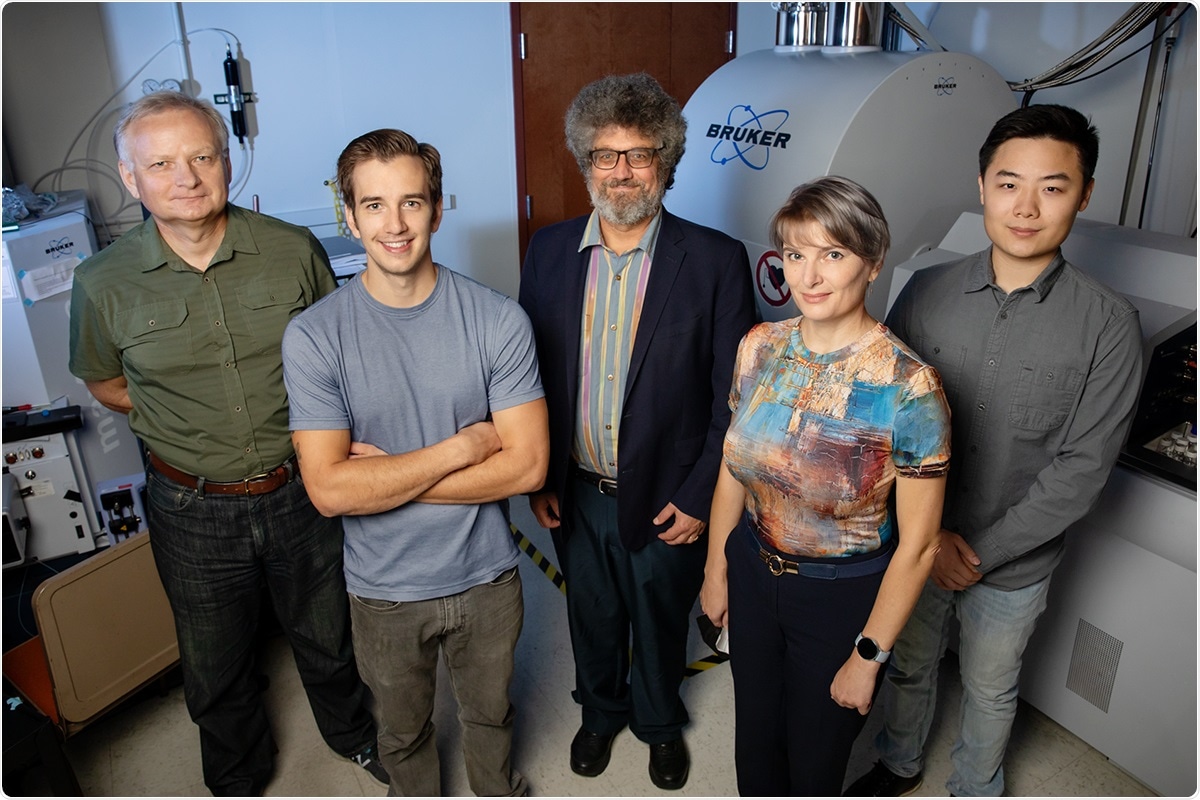Scientists from the University of Illinois Urbana-Champaign isolated and chemically characterized individual organelles within cells swiftly. The novel process assesses the limits of analytical chemistry and quickly discloses the chemical composition of organelles that regulate biological growth, development, and disease.

Chemists from the University of Illinois Urbana-Champaign are testing the limits of analytical chemistry by rapidly detecting subtle changes in cellular chemistry in an effort to boost early disease intervention. From left, professor Stanislav Rubakhin, molecular and integrative physiology graduate research assistant Dan Castro, professor Jonathan Sweedler, professor Elena Romanova, and bioengineering graduate research assistant Yuxuan Richard Xie. Image Credit: Photo by L. Brian Stauffer.
The results of the current research headed by Jonathan Sweedler, professor in chemistry, have been published in the Nature Methods journal.
The novel technique finds and isolates individual organelles with the help of light microscopy, and later chemically examines them via MALDI MS, or matrix-assisted laser desorption/ionization mass spectrometry. The whole process requires an hour—an activity that takes years to accomplish when performed by humans.
Cells are not just little sacks full of chemicals. They contain organelles that perform specific functions. The ability to characterize the chemical composition of individual organelles should lead to a better understanding of how cells develop and express diseases.”
Jonathan Sweedler, Professor, Chemistry, University of Illinois at Urbana-Champaign
The scientists stated that they are not the first to characterize organelles chemically. However, their automated targeting and chemical analysis techniques are more rapid and more precise.
Furthermore, it also guarantees analysis of what was intended. By this means, it is possible to characterize the chemical makeup of a single organelle—and not the average composition of a bigger sample consisting of numerous organelles.
For this research, the group concentrated on the cell’s vesicles—both lucent and dense-core varieties—gathered from sea slugs, the generally employed neuroscience research model. Vesicles were chosen as the organelle of interest as they are engaged in chemical cell-to-cell signaling. The scientists remark that the vesicles are bigger than most other organelles, making them exquisite first candidates to illustrate the abilities of the novel technique.
We analyzed approximately 1,000 individual vesicles from sea slugs. We found heterogeneity among the types of lipids and biologically active peptides, indicating that MALDI MS is sensitive enough to detect chemical differences between what were thought to be the same types of organelles.”
Stanislav Rubakhin, Professor, Chemistry, University of Illinois at Urbana-Champaign
According to Rubakhin, as diseases are mostly identified when heterogeneous cells arise within a single tissue type, the capability to recognize these differences at the subcellular level can pave way for prior detection and treatment.
Our new workflow can help the scientific community complete the ‘parts list’ of the organelles found within cells. Having that parts list will help us determine if something is missing or extra within the organelles, helping us spot subtle changes and study how those changes correlate to diseases such cancer and those related to the brain and mental health.”
Daniel Castro, Graduate Student, University of Illinois at Urbana-Champaign
Source:
Journal reference:
Castro, D. C., et al. (2021) Image-guided MALDI mass spectrometry for high-throughput single-organelle characterization. Nature Methods. doi.org/10.1038/s41592-021-01277-2.